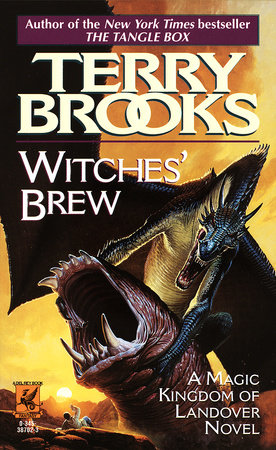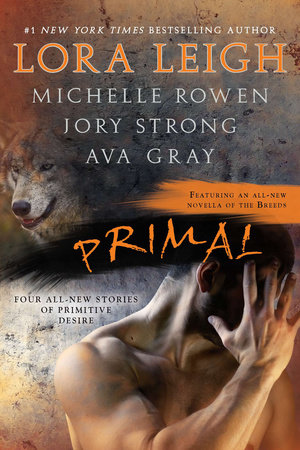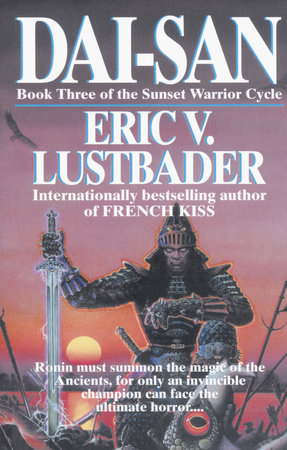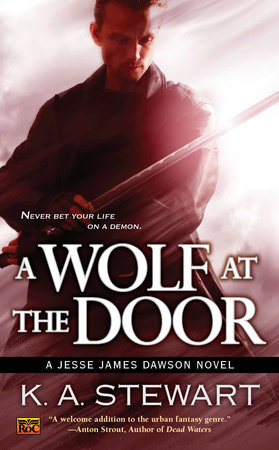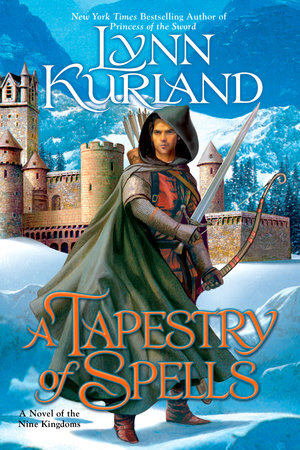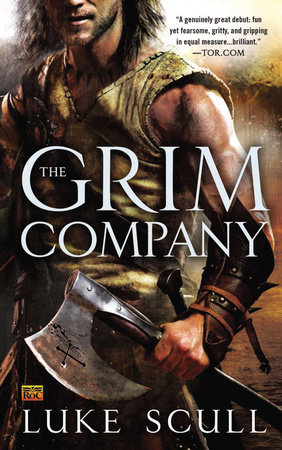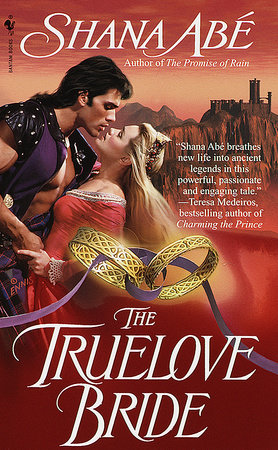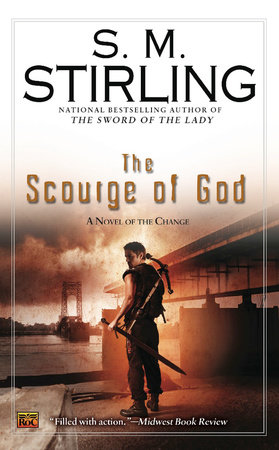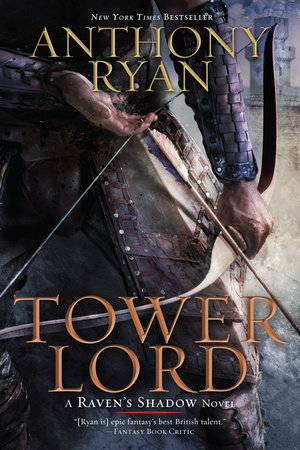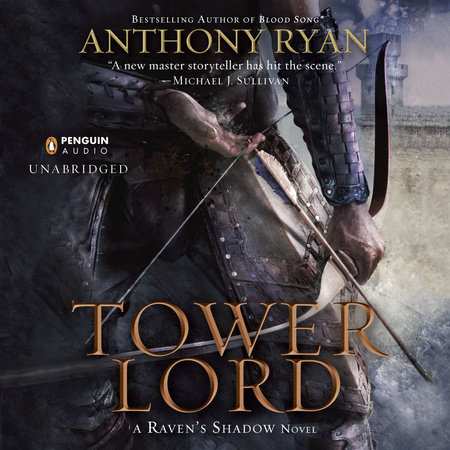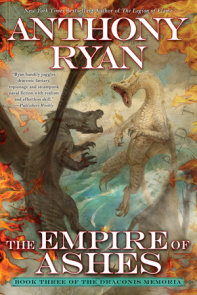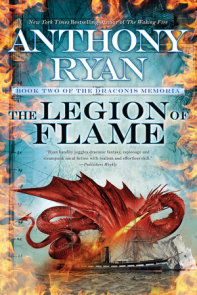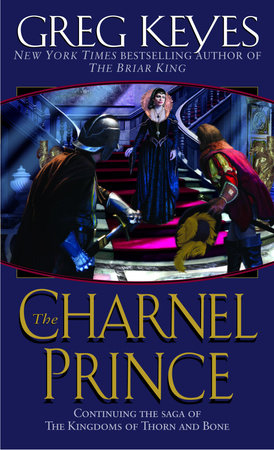‘Kicking over the Sandbox’, or ‘How I Wrote Tower Lord’
By Anthony Ryan
The history of the sequel is a troubled one, it seems that for every Godfather Part II or Empire Strikes Back there are at least ten less than stellar examples celebrating the art of the half-baked rehash (insert name of favourite hackneyed sequel here, my personal choice is Another 48 Hours – but I’m old).When it became apparent that writing a sequel to my novel Blood Song would be a distinct possibility, soon to become a contractually obliged reality, I decided at an early stage that I wasn’t interested in falling into the time honoured sequel writer’s trap of simply repeating the same formula whilst switching a few numbers around in the hope no one would notice. The temptation offered by this trap is understandable, especially when so much appears to be riding on success. It worked the first time, so why not the second? The answer is fairly simple; rehashing doesn’t work because it’s boring, we’ve seen or read this all before so what’s the point? Movie studios might continue to get away with milking the rehash cash-cow, although it remains a hit-and-miss endeavour, but I tend to think the book reading public are more discerning as well as deserving of something better.
I had begun thinking about a continuation of Vaelin Al Sorna’s story whilst writing Blood Song, much of the world I had created remained unexplored and the text had often hinted at a much more expansive tale worthy of at least another volume. I already had a title, something I’d dreamed up years before but hadn’t yet found a home for, Tower Lord. I worked it into the text of Blood Song fairly early on when the idea of a multi-book series began to gel. In fact the whole notion of the Northern Reaches was created so Vaelin would have somewhere to go in Book 2. However, I didn’t yet know what brought him to the doors of the North Tower, nor did I know who he would meet on returning to the Realm.
It was with the conception of Reva, the first major character Vaelin encounters on coming home, that the story of Tower Lord started to come together in the planning stages. I knew I wanted to bring back two other characters from the first book and give them their own points of view, but it was only with Reva that the notion of kicking over the sandbox came into my mind. I recall an interview with a special effects guy in one of the many making-of documentaries I’ve seen over the years where he described the peculiar joy he found in spending hours crafting amazingly detailed models only to blow them up. Similarly, having spent six and a half years creating the world of Raven’s Shadow I found a perverse sense of anticipation at the prospect of tearing it all to pieces, though only if it made narrative sense. The Unified Realm, as envisaged in Blood Song, was never a comfortable place, riven by social inequality as well as religious and ethnic rivalries. The turbulent, even dislikeable nature of the Realm raised a singular question: is it worth saving? Or rather, would Vaelin think it was worth saving?
War, it’s sometimes said, brings out the best and the worst in humanity, a concept often borne out by study of history. Of course, the depiction of war is nothing new in fantasy, especially epic fantasy where the notion of the titanic, world-in-peril struggle is often given free reign. But some aspects of war are not always explored to great any depth in fantasy. What happens to all the wounded? If the whole kingdom’s at war how do people eat? There are usually land battles aplenty but what about war at sea, a phenomenon that goes back several thousand years in our own world?
However, it was the testing nature of war that really interested me, the concept of a society suffering the worst trials and being forged into something new in the process, something Vaelin Al Sorna perhaps might find worth risking his life for, yet again.
It would be nice to report that once all the major plot points were in place the process of writing Tower Lord was a smooth and untroubled one, but, as ever when it comes to writing, it was anything but. I had yet to quit my day job and the Ace version of Blood Song still hadn’t appeared by the time I started work on Tower Lord. The result was that I struggled for the first few chapters. The luxury of time I had enjoyed with Blood Song was now gone, now I had a deadline and a continuing readers’ chorus of ‘is the next book done yet?’ After a month I was forced to take a hard look at my daily routine and make some changes. One of the first things I did was buy and iPad as it became apparent that my biggest time-suck was the daily three hour train commute to the office. Secondly, no more gaming until it was done, regardless of the temptations offered by the latest Assassin’s Creed or Dead Space. But, by far my biggest sacrifice was setting the alarm clock to go off an hour earlier than usual (I still get a bit tearful over that). So, for the best part of six months my routine looked like this: wake up at 6am and spend an hour writing, get on the train to work and spending an hour writing on the iPad, write for 45 minutes at lunch time, write for an hour on the train home, write for two to three hours when at home, write for up to six hours a day on weekends. Repeat until done.
Perhaps unsurprisingly, on completing Tower Lord and enjoying a very long sleep, I decided to quit my day job. Despite my authorial moaning, however, I should state for the record that I actually enjoyed writing Tower Lord. Getting lost amid the sound and fury of the Unified Realm’s greatest trial remains one of the most intense and fruitful creative experiences of my life. I can only hope everyone who reads it enjoys kicking over the sandbox as much as I did.



